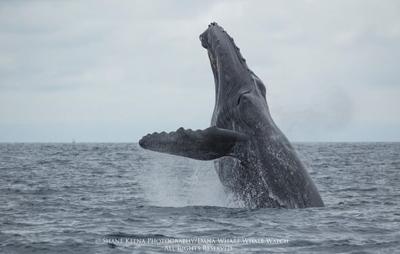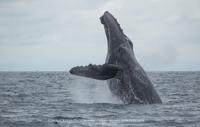
Although the unofficial opening day of gray whale migration season, the day after Thanksgiving, has passed, all eyes have been on the humpback whales surfacing in never before seen numbers in the waters off of Southern California.
Donna Kalez, general manager at Dana Wharf Sportfishing & Whale Watching, reported seeing as many as a dozen humpbacks in a single whale watching event last weekend. Close to 50 humpback whales have been reported by captains and boatmen throughout the harbor this past week.
“This did not used to happen,” said Captain Todd Mansur. “Seeing a humpback was like seeing a unicorn. It didn’t happen.”
Mansur, a captain and naturalist for Dana Wharf Sportfishing & Whale Watching, said humpback sightings have been rapidly increasing since roughly 2007, when a variety of factors caused Southern California’s coastal waters to become more nutrient rich and abundant with krill.
Headed south toward warmer waters, the humpbacks are passing quickly, presenting less opportunity for identification. Humpbacks, like many migratory species, travel using their keen senses that can feel the bathymetry of the ocean’s floor, and are believed to travel by memory.
“Blue whales, along with fin whales, were some of the first to stray from their previously understood migratory patterns into Southern California’s coastal waters to take advantage of the increase in krill,” said Mansur.
Blue whales are the loudest animals on earth, their bellows measuring more than 180 decibels and traveling for miles. Mansur said it may have been the call of the blue’s that originally brought the humpbacks closer to shore.
Passing quickly on their southern migration, humpbacks’ migration this close to shore is unpredictable. As of print publication, sightings are still being reported.


